Exhaust and Intake Pipe Formulas
I build performance pipes, and I have been using the same formulas for many years. I bought these books as a young teen-ager, because I was fascinated with tuning. These were good books, and the formulas apply best to the old-school motors. There are other considerations with today's modern motors. Anyway, these are good books for the "Classic and Antique" world.
When I build a pipe, I take all the specifications, and apply them to all the formulas in these books. I get an avarage that comes very close to the perfect pipe. I have a dyno, with sniffer, so I can trim the pipes for peak power, and usually, I have to trim the pipes slightly for best power. That may be because I am at 7,000', and gas speeds will change in the thinner air here. Sound travels faster in thinner air, so I need to compensate for the increased "wave reflex cycle from higher gas speeds" with slightly shorter pipes. This "is" actually Rocket Science!
Here, I have copied every page that I have from these books. Now, you need to accept that in most cases, smaller pipes will make more power. It's all about power, except in the H-D fashion world of "Loud and Chrome". Also, that a Two-Into-One will always make better power than Drag-Pipes, especially torque. This is real! You can easily find thin-wall pre-bent pipe sections, and then fabricate a nice pipe. There are "slip-On" mufflers available in many configurations. Get with it!.
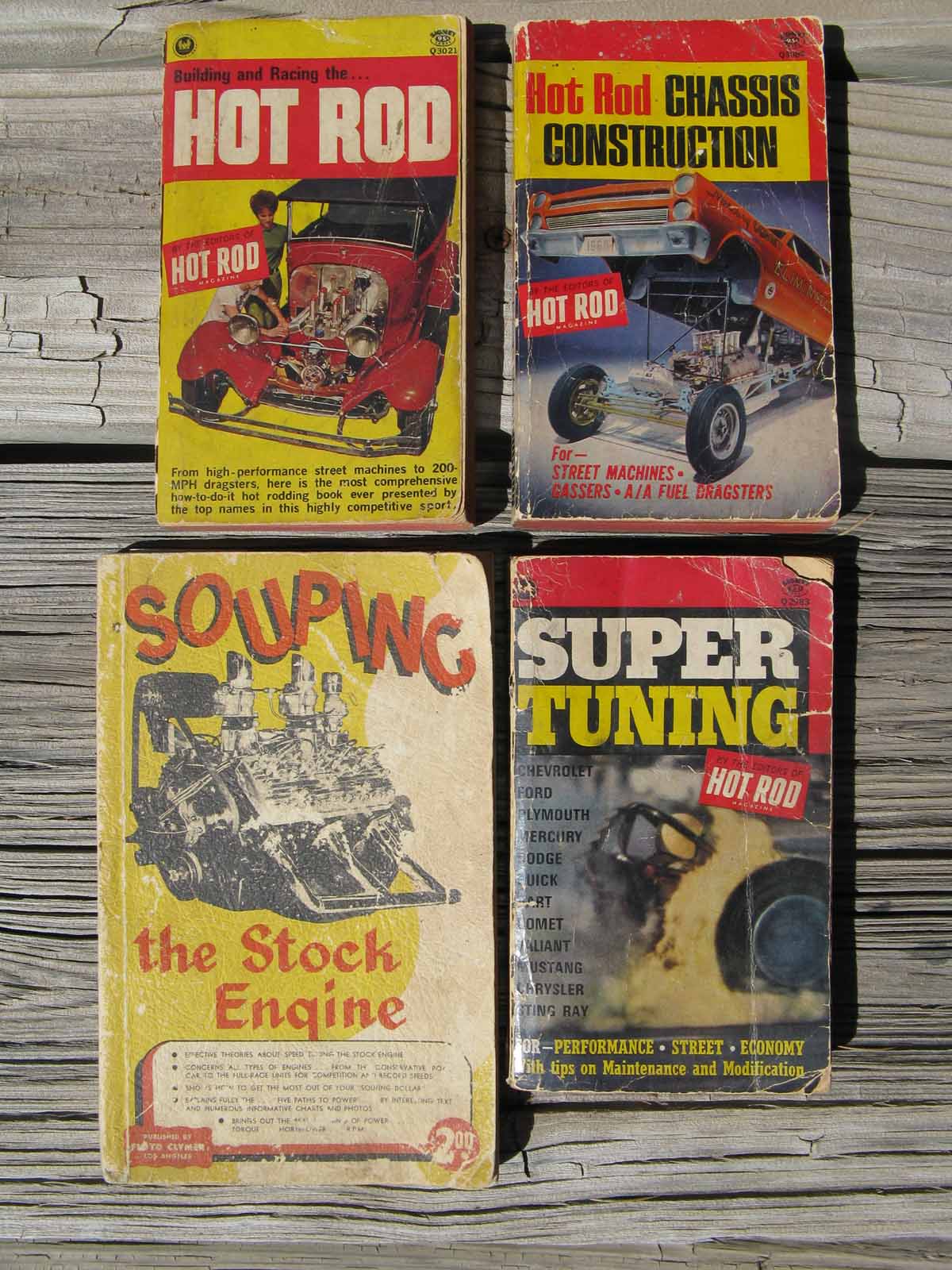
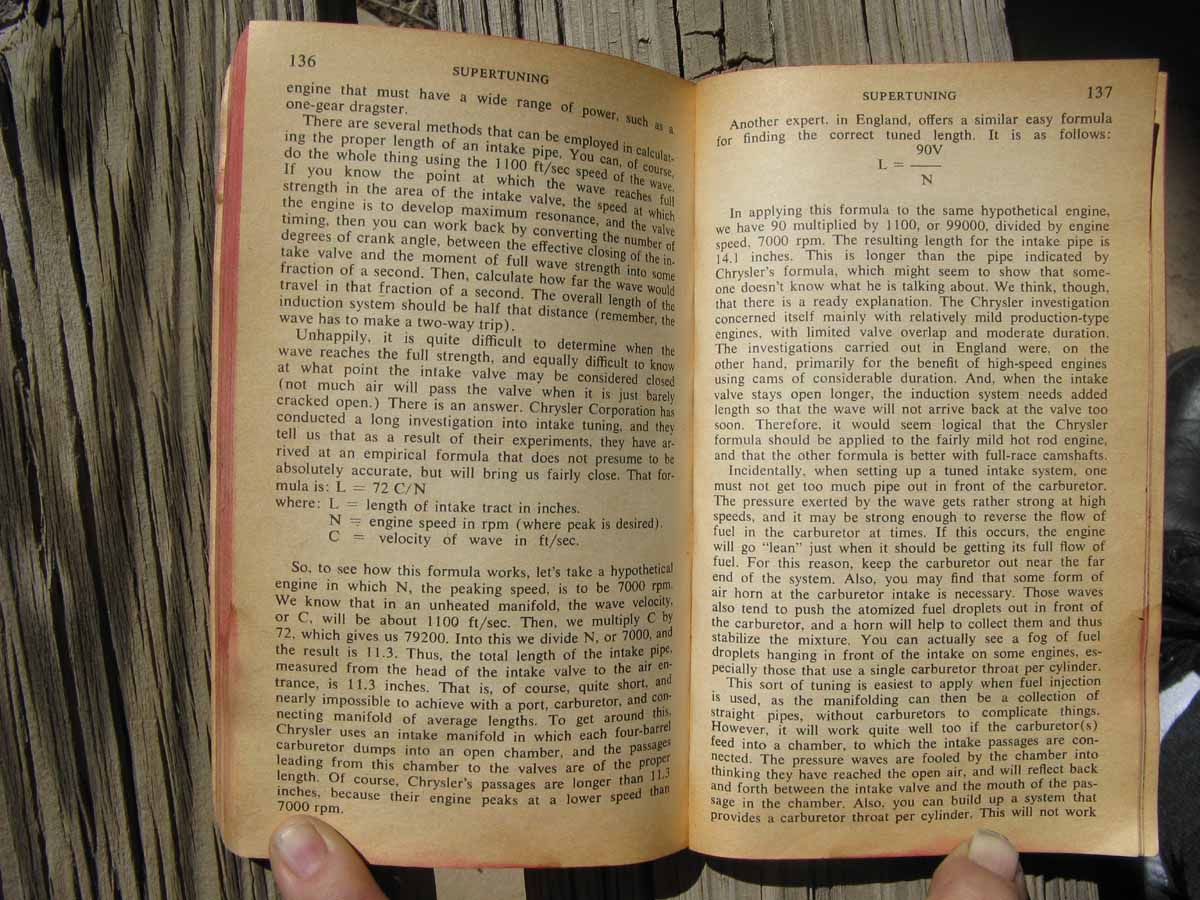
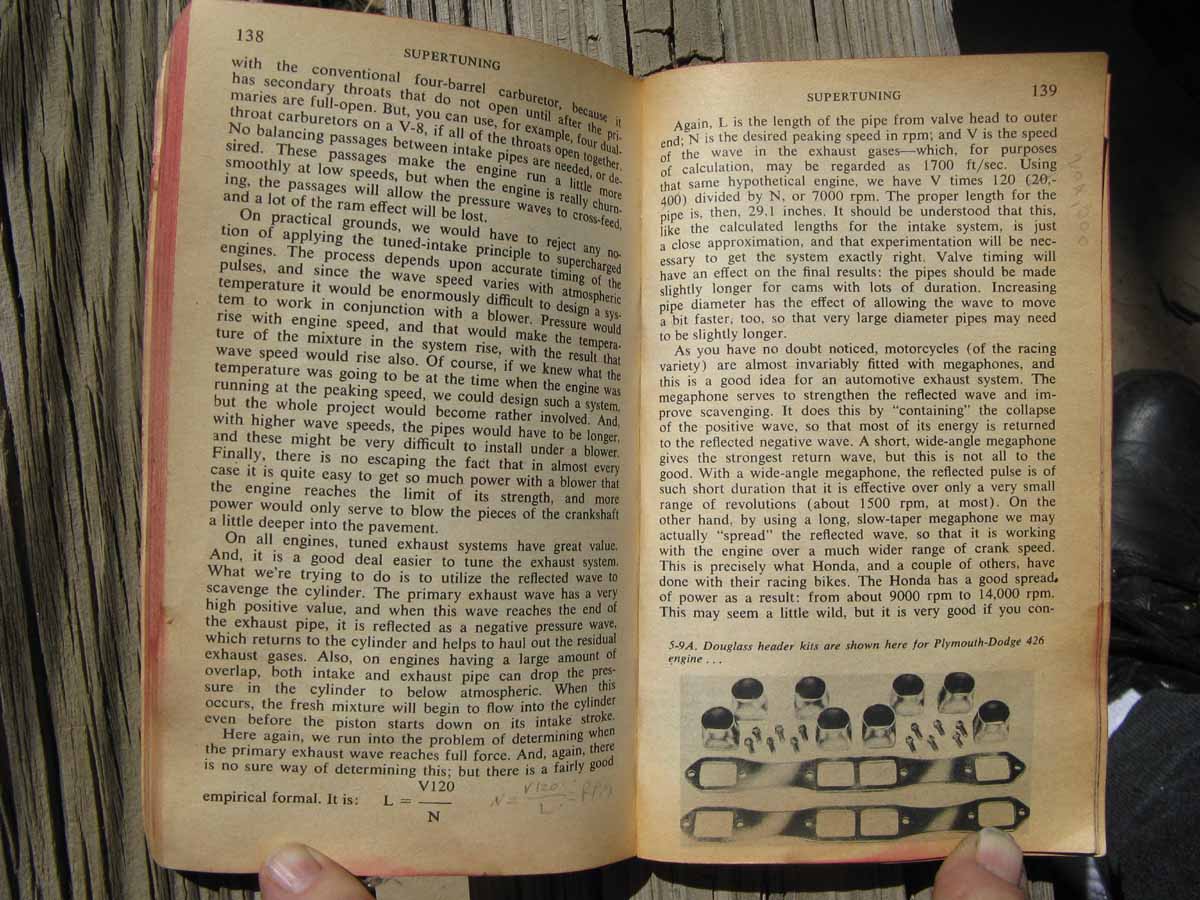
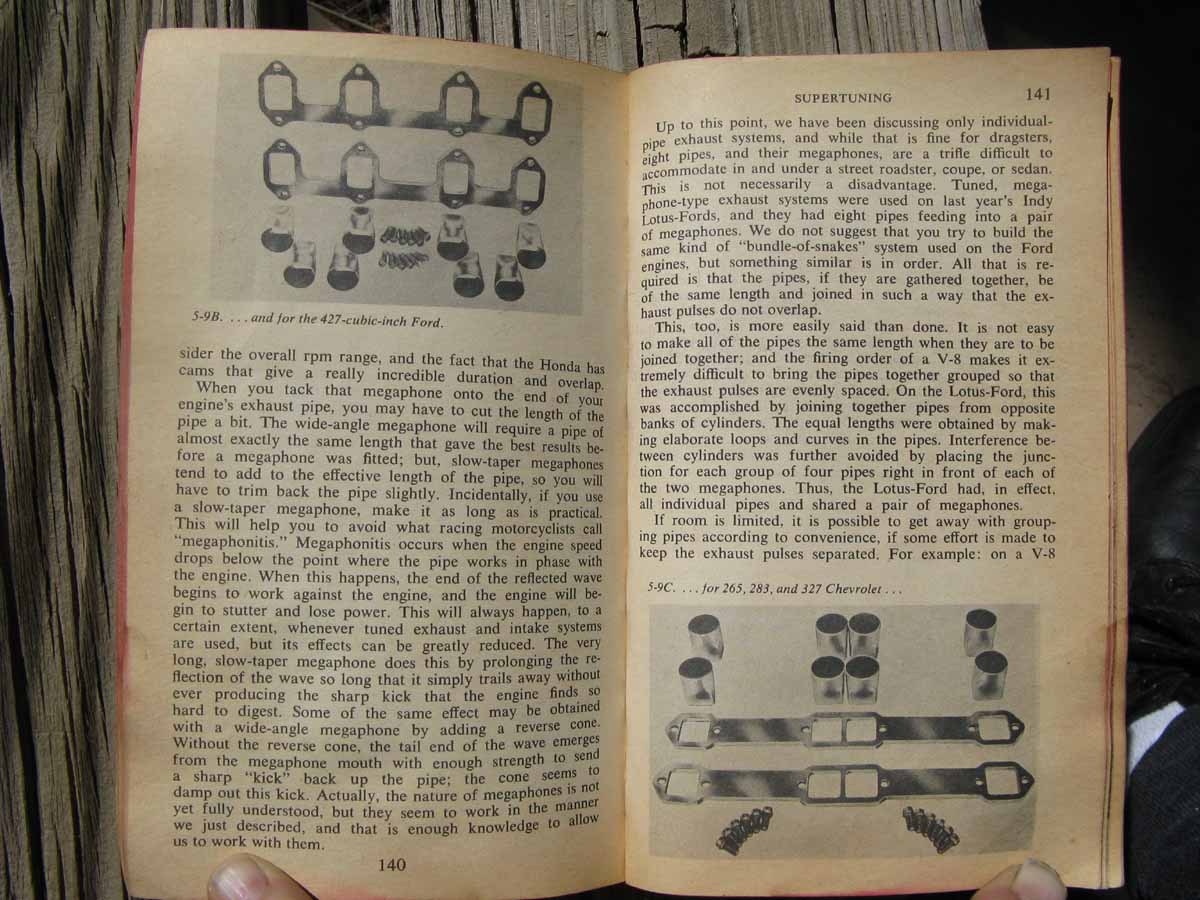
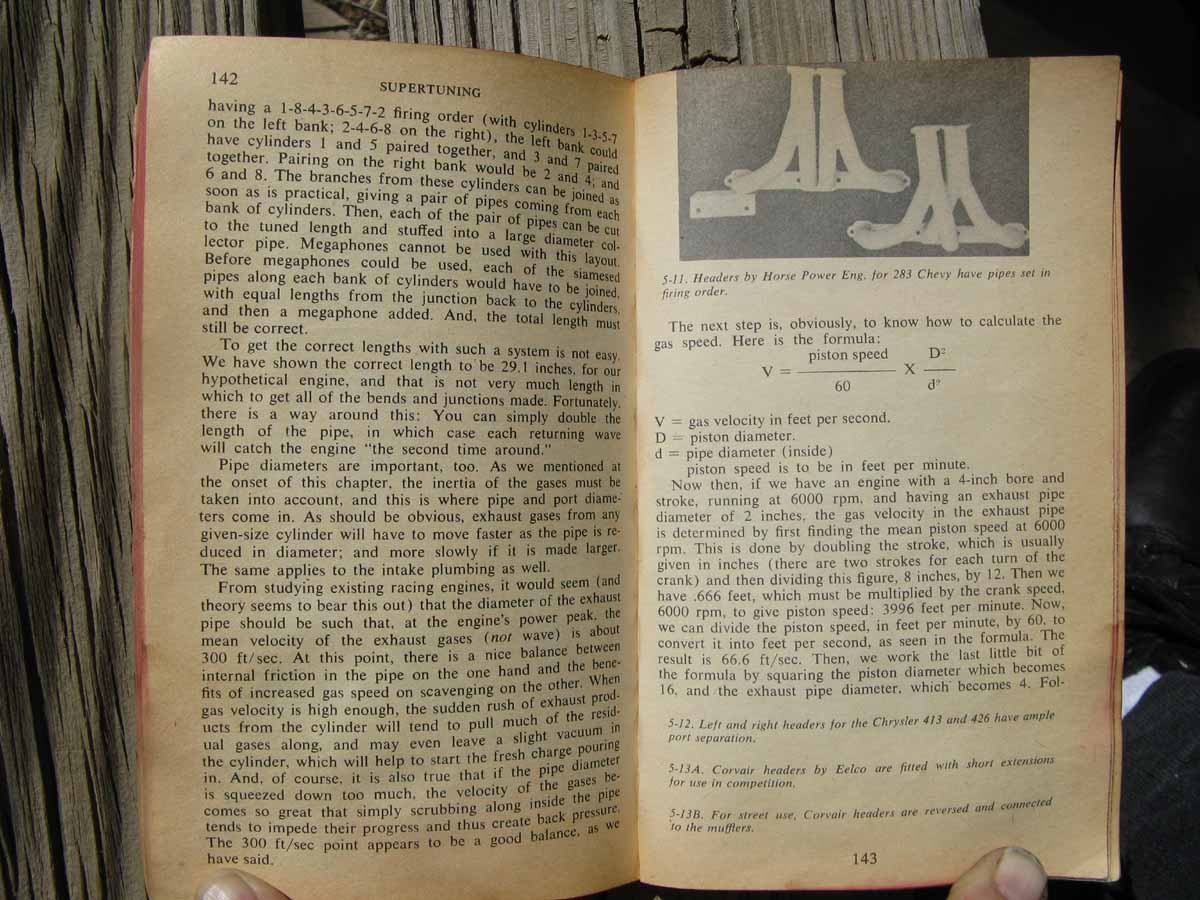
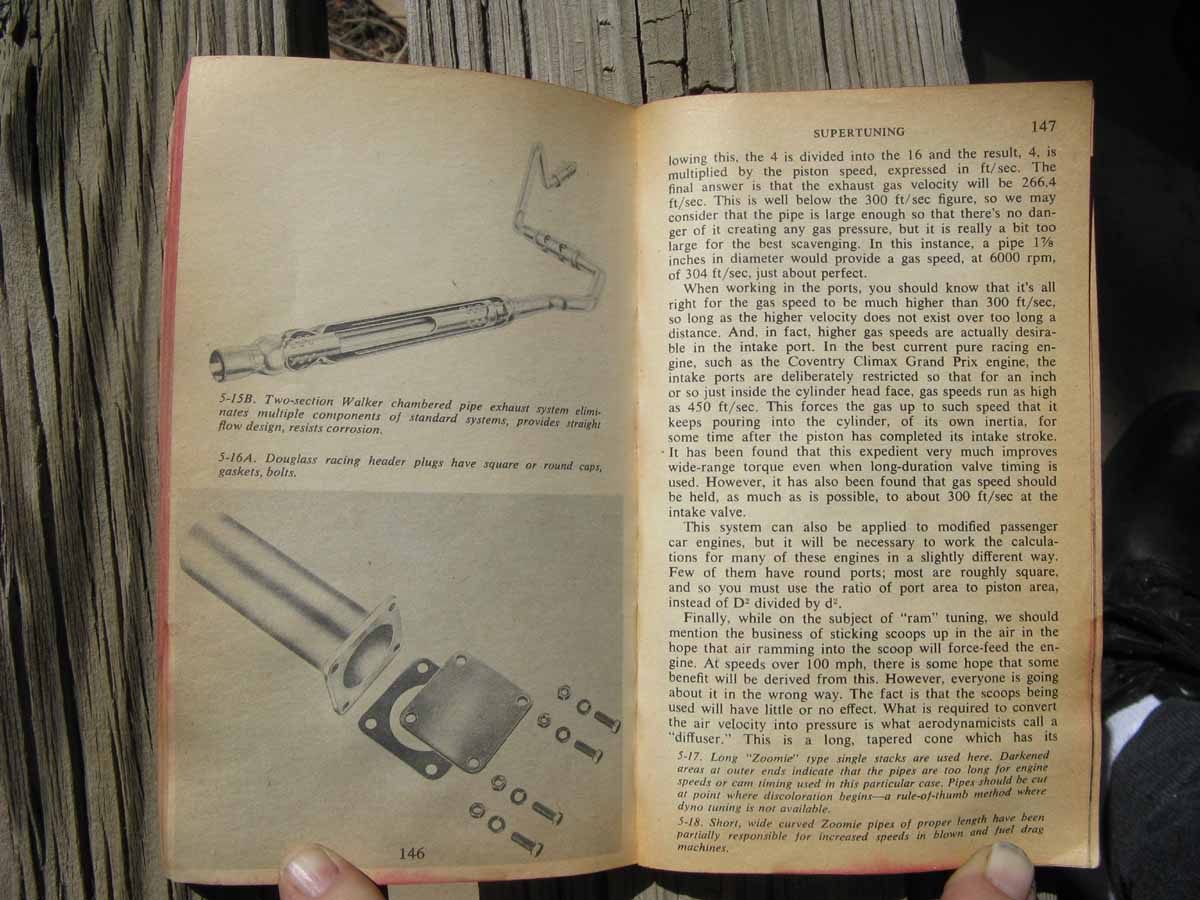
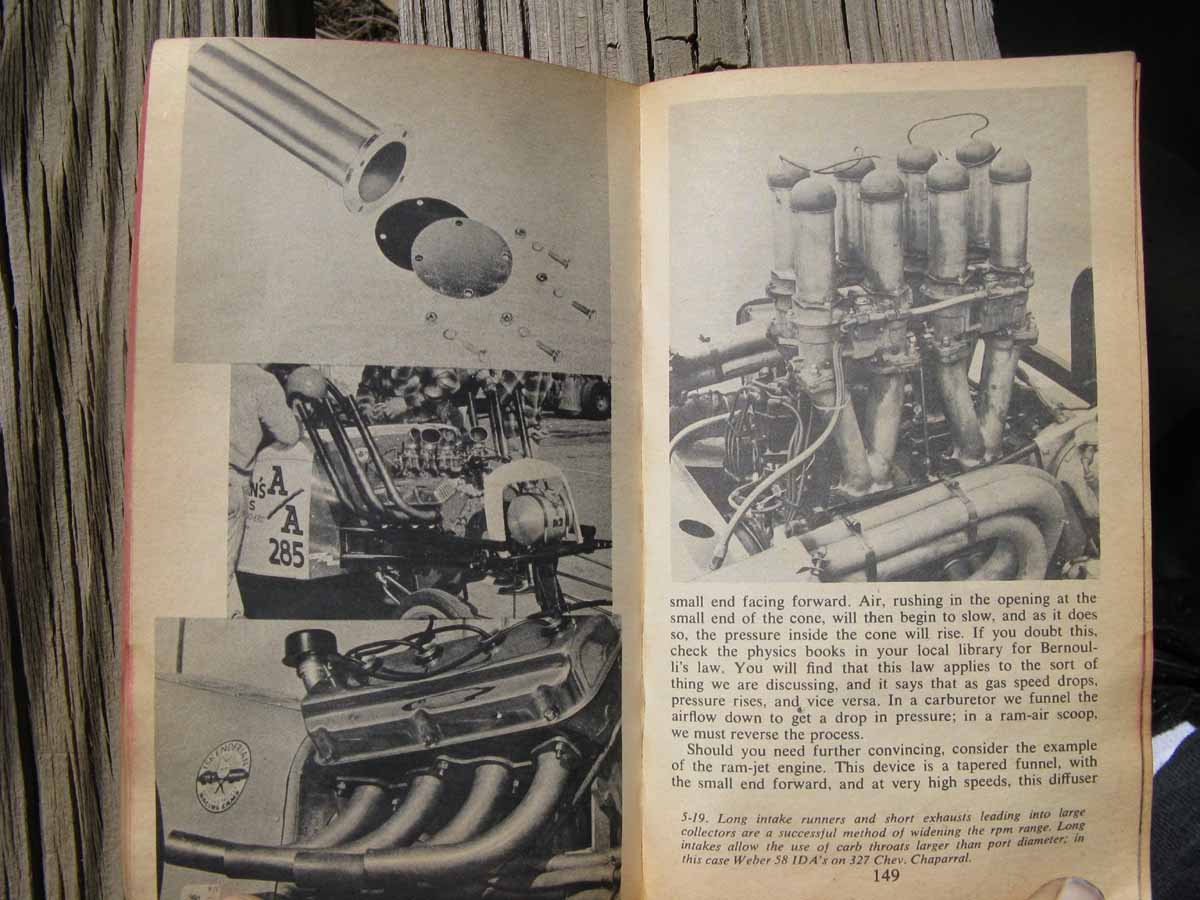
Here's a pic, and drawing of a pipe that I made for a 920cc Norton full race motor with Nitrous-Oxide for Bonneville Land Speed Racing. I found a pipe design from these pipe formulas, and I ended up trimming off 2" of head pipe lenght for a 4Hp gain. I made (3) similar megaphones that were 1 3/4" longer than the other (short, medium and long). The medium megaphone made 4Hp more than the others, where they made the same power each. That's an 8HP gain over a good design, but trimmed to perfection for this motor and it's anticipated RPM range, on my dyno. The drawing shows the final dimensions.
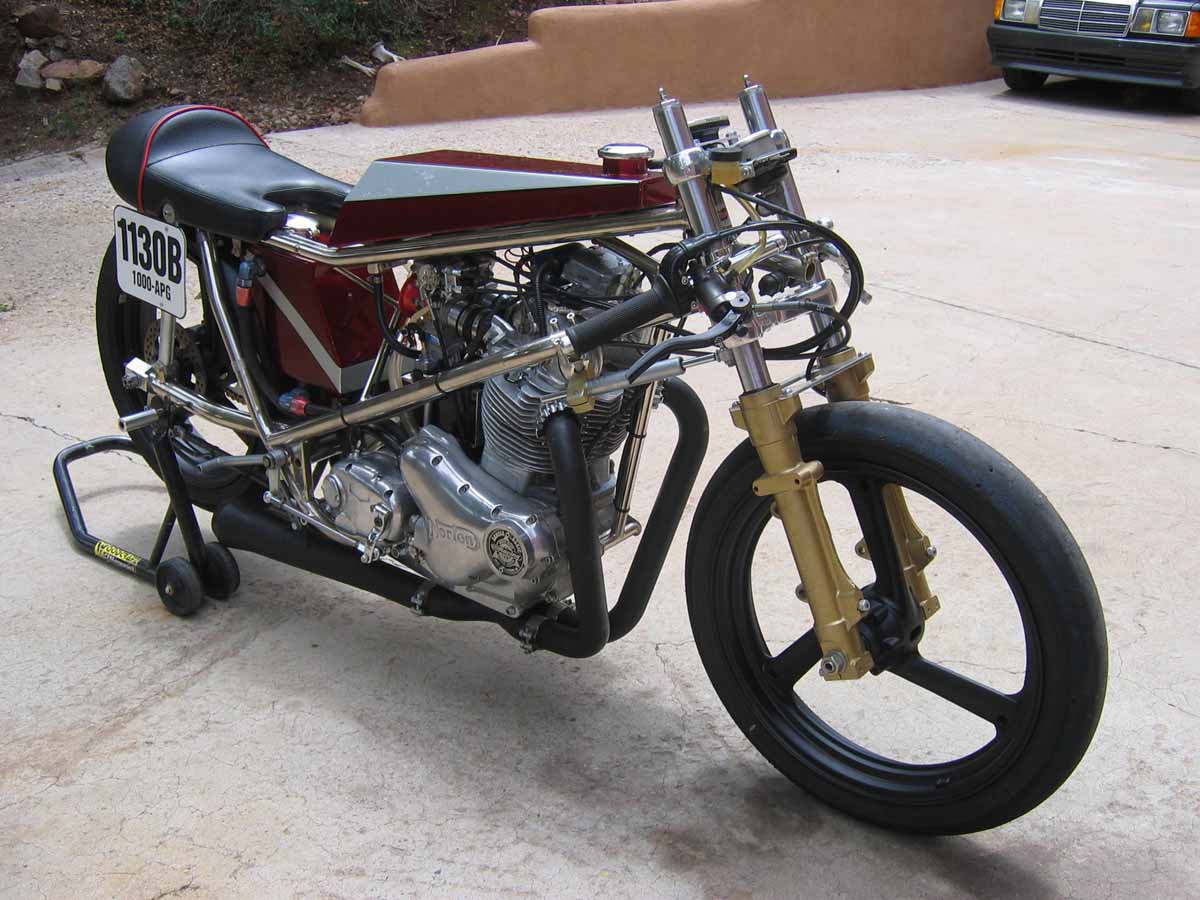
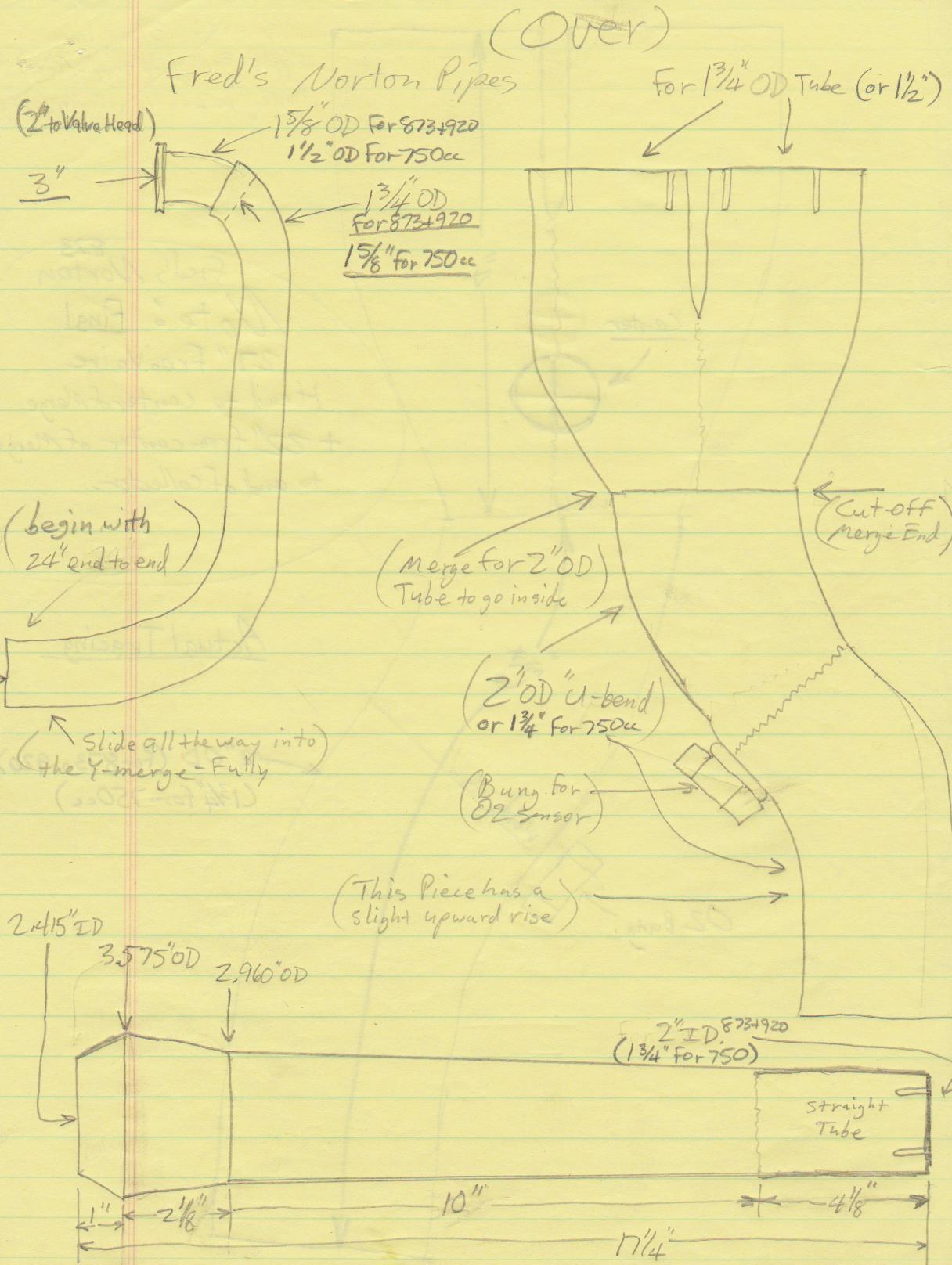
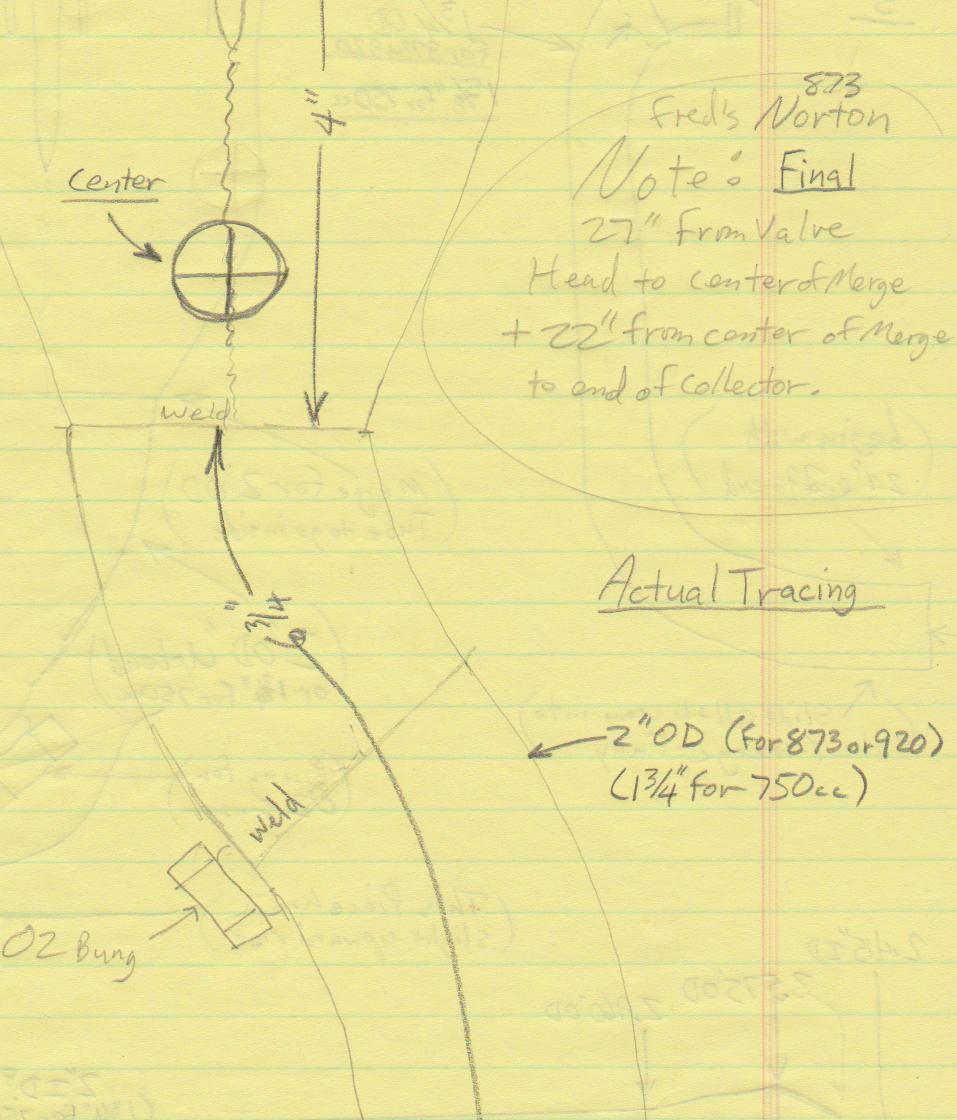
CONTACT INFORMATION:
James R. Mosher
(505) 466-7870











